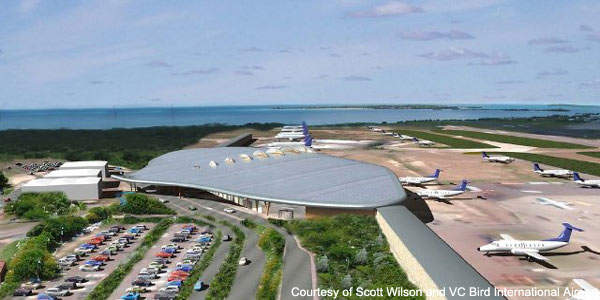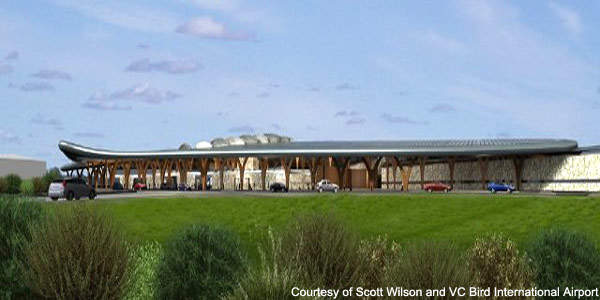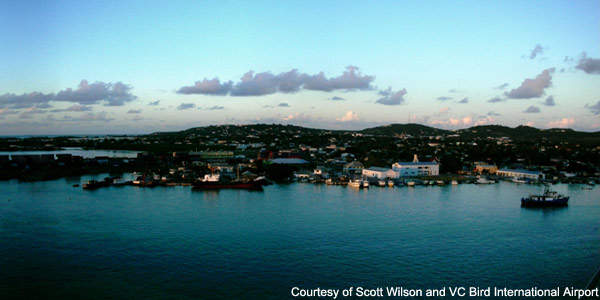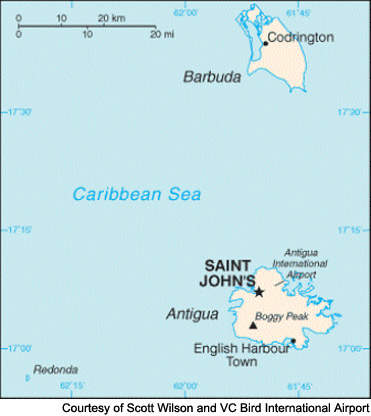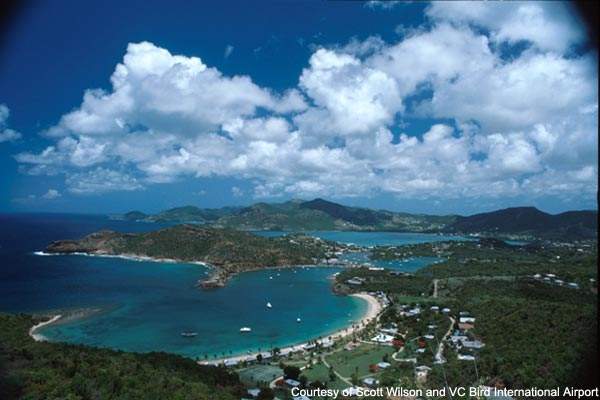VC Bird International Airport (named after one of the island’s first prime ministers, Vere Cornwall Bird) is the major airport for the islands of Antigua and Barbuda (was built as Coolidge Air Force base by the US during World War II and then given over to Antigua for a civil airport after the war).
The airport is a small concern situated in the north east corner of the island about 8km from the capital St John’s. The airport has a single terminal that serves both domestic and international passengers. The terminal has basic facilities including a restaurant, a bar, post office, ATM and shops including duty-free, newsagents, souvenir outlets and travel accessories.
During 2005 an IATA (International Air Transport Association) report criticised the airport facilities and questioned its safety.
In the same year the airport commissioned a master plan to detail its plans for the future of the airport. The runway 0275 is 2,737m long and is also in need of refurbishment.
VC BIRD EXPANSION PLANS
In February 2008 plans were put into action to expand the airport so that Antigua could begin to focus on the South American tourism market to a greater extent.
Harold Lovell, Antigua’s Minister of Tourism and Civil Aviation, commented: “the existing facility is too small to meet the demand. We will aim at the Spanish and Portuguese language countries like Brazil. There is tremendous potential there. This will all add to the pressure on the airport and thus the need for refurbishment and expansion.”
The new terminal building is due to begin construction in 2009. The existing terminal saw some improvement in mid-2007 with 500 new seats and new check-in booths but a total refurbishment will be required when the new terminal is completed.
The new terminal is being constructed by the Antigua and Barbuda Millennium Airport Corporation, which was appointed in 2005 (designed to serve capacity for thirty years). The master plan for the airport was prepared by Scott Wilson Kirkpatrick and Reid Architects in 2005-2006 and the new terminal was due to be completed prior to the Cricket World Cup. Unfortunately lack of funds meant that the terminal did not get built on time and construction will now start in 2008-2009.
CONTRACTORS
Turner Construction is the advisor to the Government of Antigua and Barbuda about the project. The project is being undertaken by a consortium of Constructora Andrade Gutierrez of Brazil and ABI Ltd, an Antiguan bank.
Phase one includes renovation and expansion of the existing terminal (first built in the 1980s), connection of the parallel taxiway to the main runway, overlay of the main runway and creation of an additional landside access road.
Phase two of the overall project will include extension of the main runway, upgrading of airfield ground lighting, expansion of the apron, and a new terminal building. The building will be constructed from materials reflecting the local architecture. The walls will use panels of local stone and the metal clad roof will be supported on timber beams with large spans.
MASTERPLAN
The first phase of the new terminal (1A and B) will cost $100m. The structure will include a structure designed to serve for 30 years. The three-level 78,000m² terminal will include baggage handling systems, check-in systems, building control and management system, airport operational database, FIDS and new operational systems.
The basement level of the terminal building will house baggage processing, while the ground floor will include a landside concourse for check-in and immigration, baggage reclaim and customs for arrivals. The runway will be refurbished to a standard and dimension (3,200m × 75m extended westwards) so that it can accommodate the A380. Previously the airport has hosted aircraft such as the Boeing 777 and the 707. The apron areas will give 33 stands by the end of the master plan in 2030 (11 wide-body and 22 normal).
There will also be a car park to accommodate 2,500 cars by 2030. Support facilities (fire station, aircraft maintenance, flight catering and cargo facilities) are to be relocated to a dedicated support zone south of the runway.

